
By William Van Zyl
Published on July 6, 2019.
Edited in 2023.
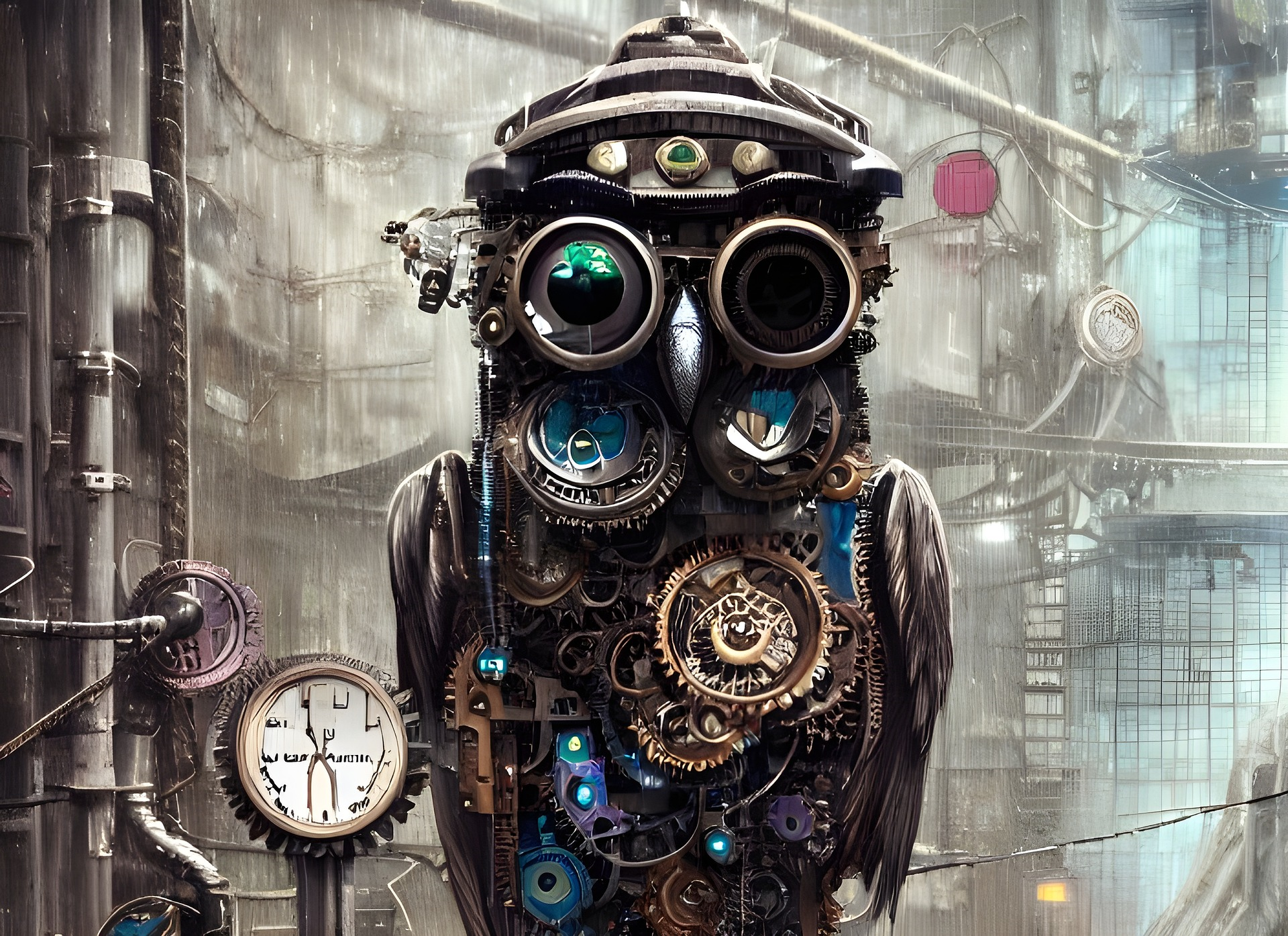
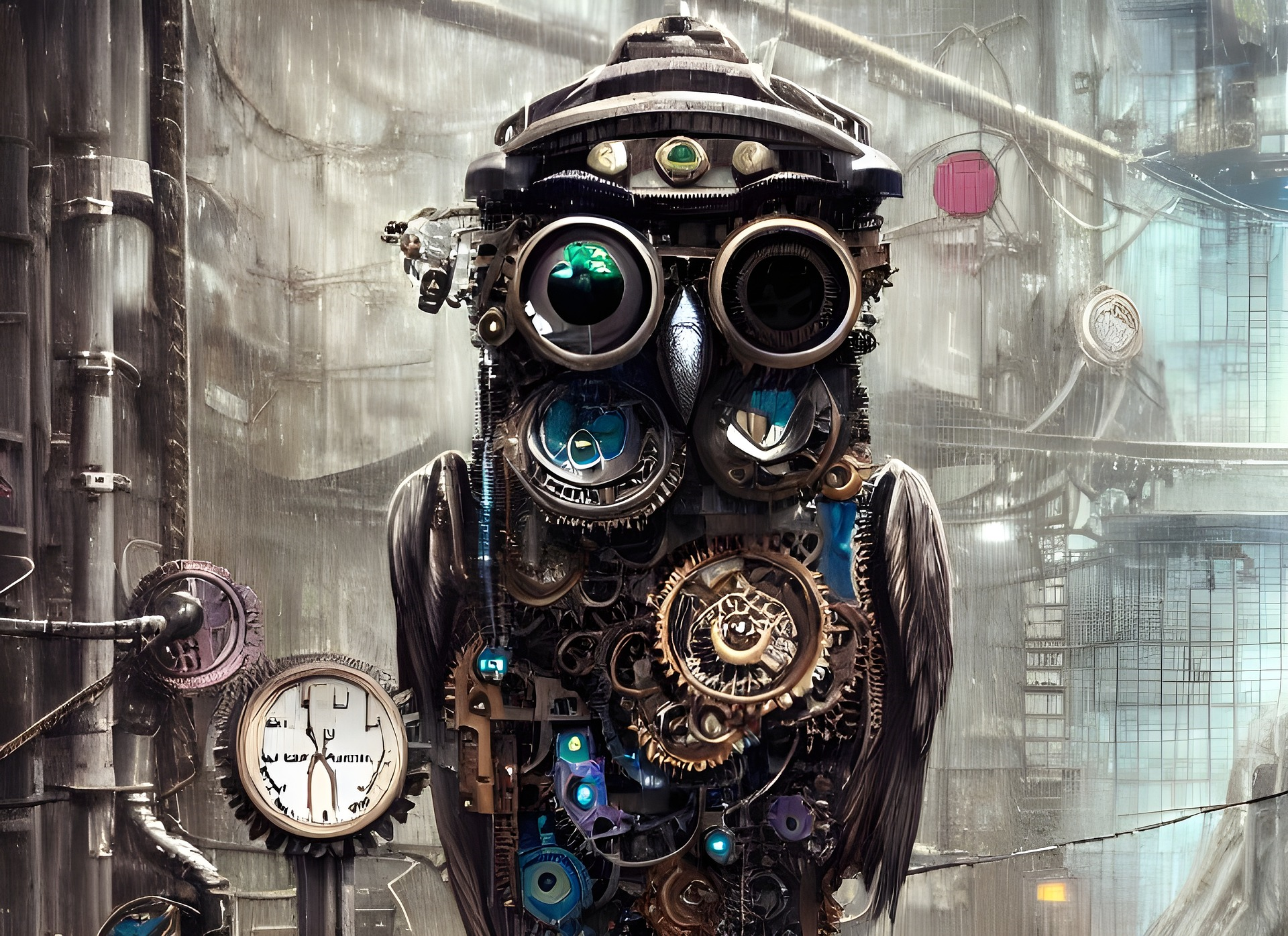
It is the year 3001. Strange and sinister sounds fill the forests. Sounds never heard before. The flutter, stutter, and clutter of unknown flying objects fill the forest’s air.
Before the year 3000, the earth was teeming with life. Natural life. But, catastrophically, the earth’s environment has collapsed. The destructive weight of industrial pollution, irresponsible disposal of effluent, and uncontrolled radioactive waste have crushed all life on earth as we know it. In the past, the land, sky, and oceans teemed with abundant life. Now, planet earth and its oceans are inhabited by weird mechanica.
Machines reign supreme. Or do they? What reigns? And, you might ask, what is behind all of this?
It is the year 3001. Strange and sinister sounds fill the forests. Sounds never heard before. The flutter, stutter, and clutter of unknown flying objects fill the forest’s air. There is an eerie presence in the forest canopy. Red, green, and yellow LED eyes are staring, and some are flashing. Not a single species blink is visible. A small digitally controlled carburettor jerks and splutters; coughing up high-octane fuel. Some of the newer models cough up yellow nuclear foam. Lithium, Nickel, Cadmium, Metal hydride, Alkaline, and Lipo-polymer ooze from a couple mechanica laying on the forest floor. Kicking and ‘choking.’
Some large veined leaves are moving. The sinister whiz-whaz of a small bird-like plane scares black ants up a tree as it passes; the zoom-zoom of a small screaming turbine engine is deafening. The chameleon places its front feet in its ears to shut the noise. Its whole body vibrates violently while sitting on a tiny twig. The back legs are holding on. The chameleon is hanging on for life. The heart-stopping cacophony of mechanica shocks the forest out of its deep sleep. The intruders have no emotion. They are cold and calculating. They don’t rest; they don’t blink. Relentlessly they work – day and night – nuclear power haunts them. Their tummies are filled with radioactive material. They have heart burn and bad indigestion. A curse rests on them: Fly and don’t stop – there are no rest for the programmed!
The only movement in the forest is mechanical life. Tiny engines, turbines, motors, tubes, bolts, nuts, rivets, steel, aluminium, stainless steel, strontium, jet fuel, nuclear encasements, microprocessors, and minute computers – all ingeniously arranged and fine-tuned by a new creator – are moving. These weird looking creatures are flying, creeping, running, walking, and flapping in the once beautiful and pristine forest.
They move precisely; some move at speed; some dig frantically to hide; some fly aggressively. The sound of turbine and jet engines propelling birds, fusion loaded butterflies floats silently; the swoosh, swash of discreet hydraulic pumps and the clanking of the micro-plastic tubes vibrating on cold metal fill the serene and eerie forest air; acoustic sensors beep faintly, radar ears scan secretly, computers calculate phenomenally. Some mechanica get solar power from the sun; batteries are recharged continuously; tiny micro wind turbines – installed to some of the species – whizz past; the microturbines spin and spin. They are singing. A small vibrating nuclear-powered propeller remind of scenes of World War 3 – spinning at a devastating speed. The smell of rotten Sulphur whiffed past. What? Could that be the Tellurium element? The toxicity on the canopy floor is alarming.
Some wildlife is flying, some are creeping, and many are digging – trying to get away from it all. Many are hiding behind leaves and tree trunks. They are filled with mechanic and nuclear fear. They are not sweating, they are oozing yellow radioactive gel. A couple of animals are basking in the warm sun – vibrating and recharging via their tiny solar panels. They seem to be happy – for a while.
The solar sheets are harnessed and strapped to their backs and some photovoltaic panels are incorporated into their wings. Wafer thin sheets cover their wings and bodies. They are encapsulated – incarcerated.
The words of Shakespeare rings in the digital memory of the creatures. They are programmed:
Ring the alarum-bell. – Blow, wind; come, wrack.
At least we’ll die with [with dysfunctional electronic components and batteries] harness on our back. Macbeth Act 5, Scene 5.
Some are nervous; some are cold. However, they are focused – continually beeping. Mechanica don’t need to eat – the food chain makes no sense to them. And, what is a predator? All they know are the expiry dates on their tummies. They know they will die when they run out of power. They will be replaced in a heart beat, nobody have time to ‘fix’ them. Nobody cares, they are just machines.
Table of Contents
Overview
We are looking at the possible annihilation and extinction of animals, birds, insects, fish, and other animal life species on earth in a scientific, novel, and unique way.
A Futuristic Scenario.
This article was inspired when my wife gave me the book Mechanica, a Beginner’s Field Guide by Lance Balchin.
The intricate scientific details of ‘mechanica’ – animals on land, in the sky, and the sea – which includes birds, butterflies, bees, fishes, snakes, and more, are explored. Specifically, the artificial eagle and the functional aspects of the eagle’s ‘mechanical, biological, and physiological systems’ are touched on. Aesthetics is also considered. The digital artwork of Lance Balchin – author and illustrator – are examined. His published book, Mechanica, includes a unique futuristic perspective of the animals as we know them. His illustrations of the Aquila Artificialis are explored.
The bird of prey – Aquila Artificialis (artificial eagle) – is the focus of this article and leads into more profound questions of maintenance, equilibrium, programming, and ultimately the balance of the species in the broader environment (e.g. the forest). Biodiversity is touched on. However, this article endeavours to look beyond the imagination of the great author, illustrator, and artist. Balchin’s brilliance is embraced. However, the author of this comparative article endeavours to grasp the aesthetics, the function, the pure science, the intricate design of the eagle, and consequently, the design of all life on earth — contrasting, comparing and questioning along the way. The article is thought-provoking, colourful, and spectacular! Contrasting the organic with the synthetic. Let’s go deeper.
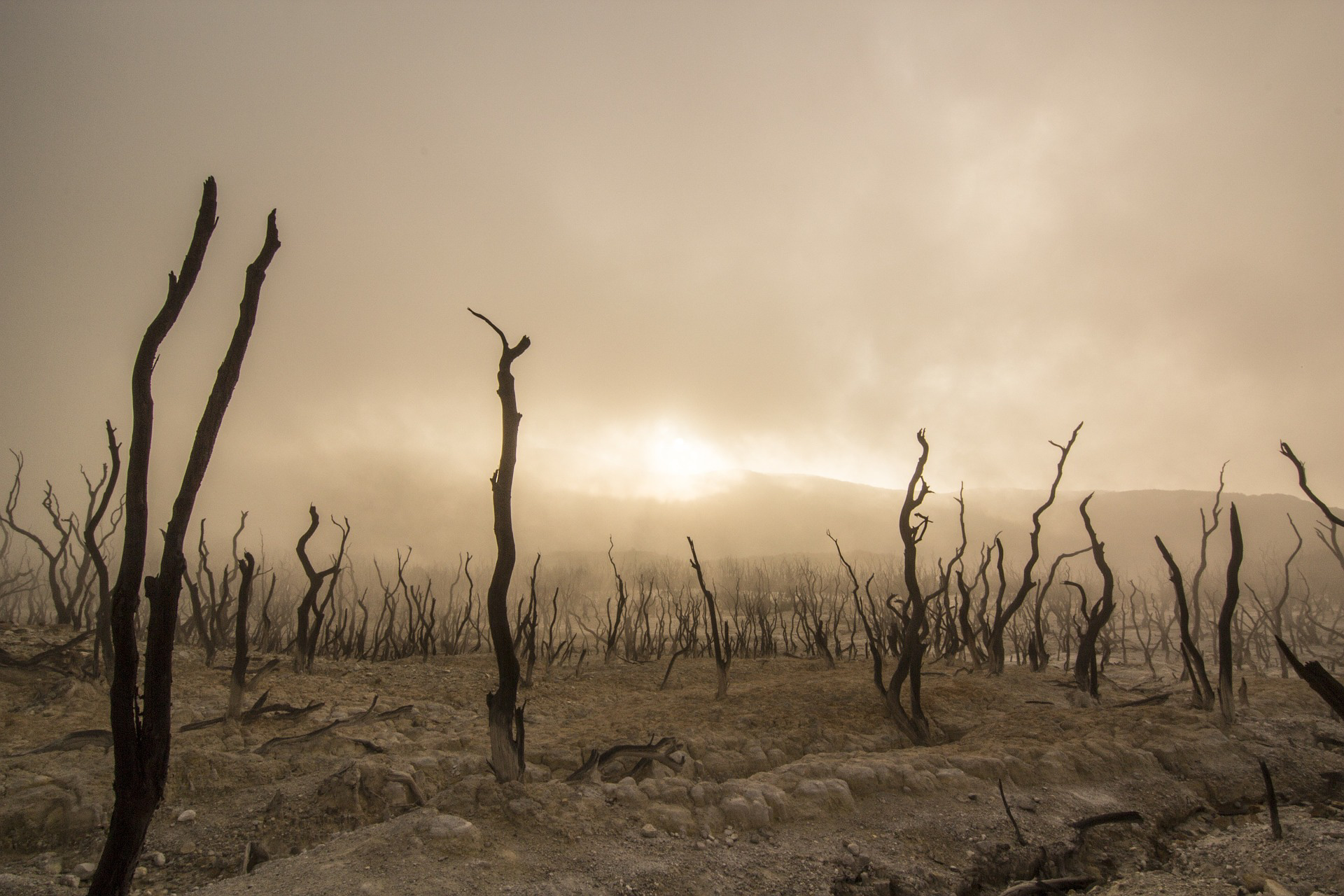
When illustrator Lance Balchin created the artificial eagle – inhabiting the earth by the year 2203 and beyond – he showed that many of the animals, birds, insects, snakes, fishes, and other species had become extinct. Man – or aliens – have created mechanical replicas of the species to replace the extinct natural species. Much more intelligent and more sophisticated, you might think. A sizeable artificial eagle weighing 7,9 kg and flying at a top speed of 210 km per hour is an example of such a mechanical bird of prey.
Balchin – a creative and gifted digital artist from Australia – created a futuristic story where mechanically designed species populate the earth. In his two award-winning books, Mechanica and Aquatica, which he published from 2016 onwards, show a novel and unique hybrid of digital art, electrics, electronics, hydraulics, turbines, nuclear propulsion, steel, cables, batteries, plastic, wood, and more. Some organic matter is included in his designs, like feathers, for example. As we know it, synthetic materials and human-made systems are installed into the new species. A well-equipped ‘workshop’ of Adobe Photoshop and a visionary mechanic and scientist are the genii of these creations. One has to view the art of Balchin’s imaginative and future perception of such a weird and wonderful world to understand his grand innovative ideas. Lance explains that it takes about 70 hours to use Adobe Photoshop to create one species.
Imagine how long it will take to create the thousands upon thousands of species in a forest – for example, using a computer. And that is just the design process – note blueprints only. It then has to be built and assembled. That will take time. Then more time is required to test them. Then, more time to make them work in relation to one another (equilibrium and balance – biodiversity). And did I mention the ongoing time to maintain every species? Will they break down at some point, or will they be replaced? Man will probably need millions of years to recreate all the species on earth. It has to be fine-tuned, and there is a massive maintenance task. It will be exhausting, to say the least! I am referring to man, the creator of the teeming species, in a ‘damaged’ forest on earth.
For Balchin, creating the species in Adobe Photoshop is a digital process. It is fun. He lets his creativity and innovation fly on a computer screen. Photoshop brings individual elements – bird bodies, engine parts, turbine engine parts, tubes, cables, hydraulics, nuts, bolts, rivets, feathers, computers, electronics, sensors, radar, and much more – together to create Mechanica. The artist chooses each element to ‘cut’ from parts and components as man knows them. Then, it is resized; sometimes warped; sometimes coloured. He has the choice to darken or lighten, reorder, or trim. He has the total freedom to create whatever he wishes. He becomes the creator. The design starts with a simple shape; more complex elements can be included as the artist’s imagination bend, flows, and connect. The end product is a uniquely designed species that started in the very center of the imagination of the artist and creator – Balchin.
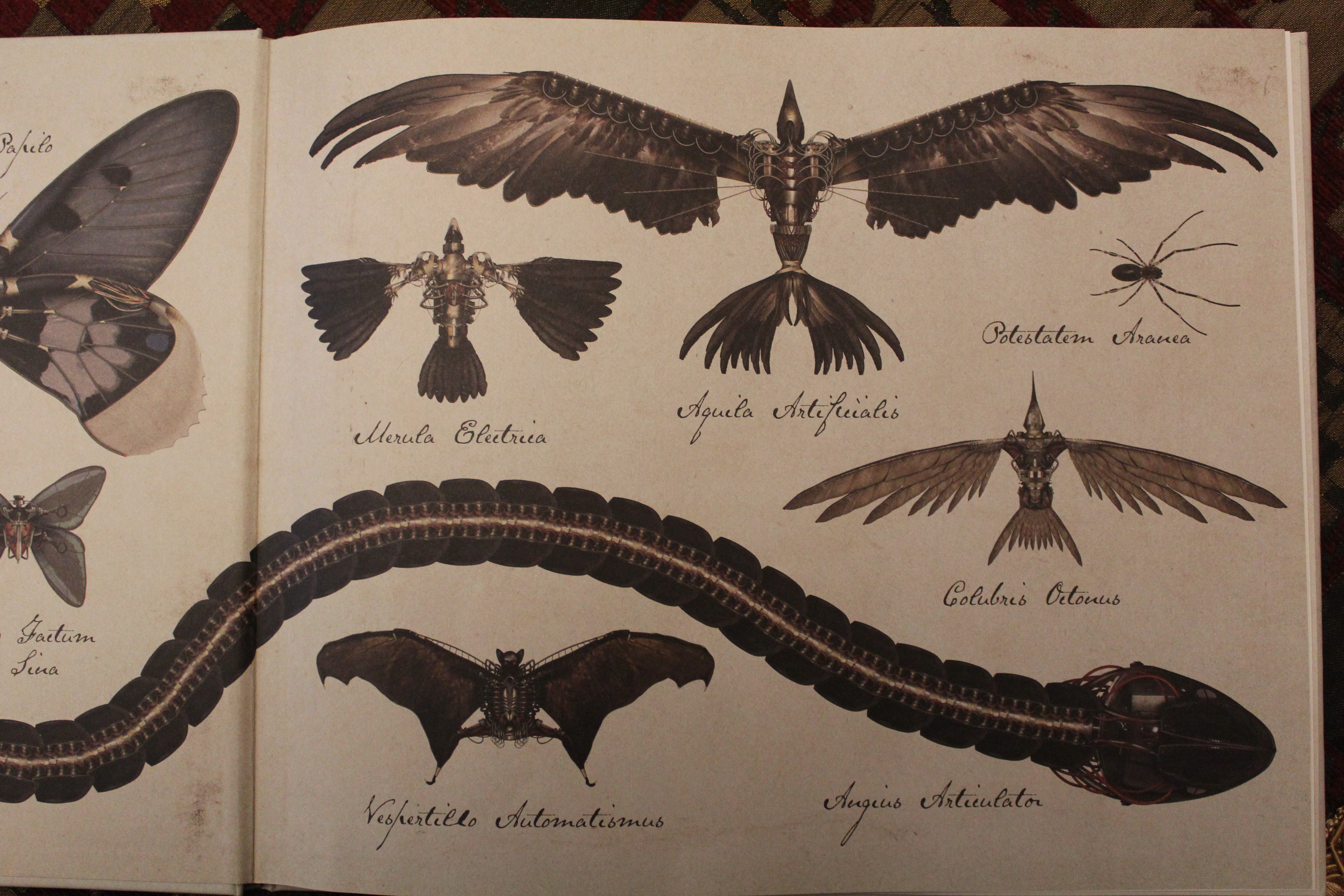
The opening page of the award-winning book by Lance Balchin: ‘Mechanica.’ See the Artificial Eagle at the top center (Aquila Artificialis). Photo by W. Van Zyl.
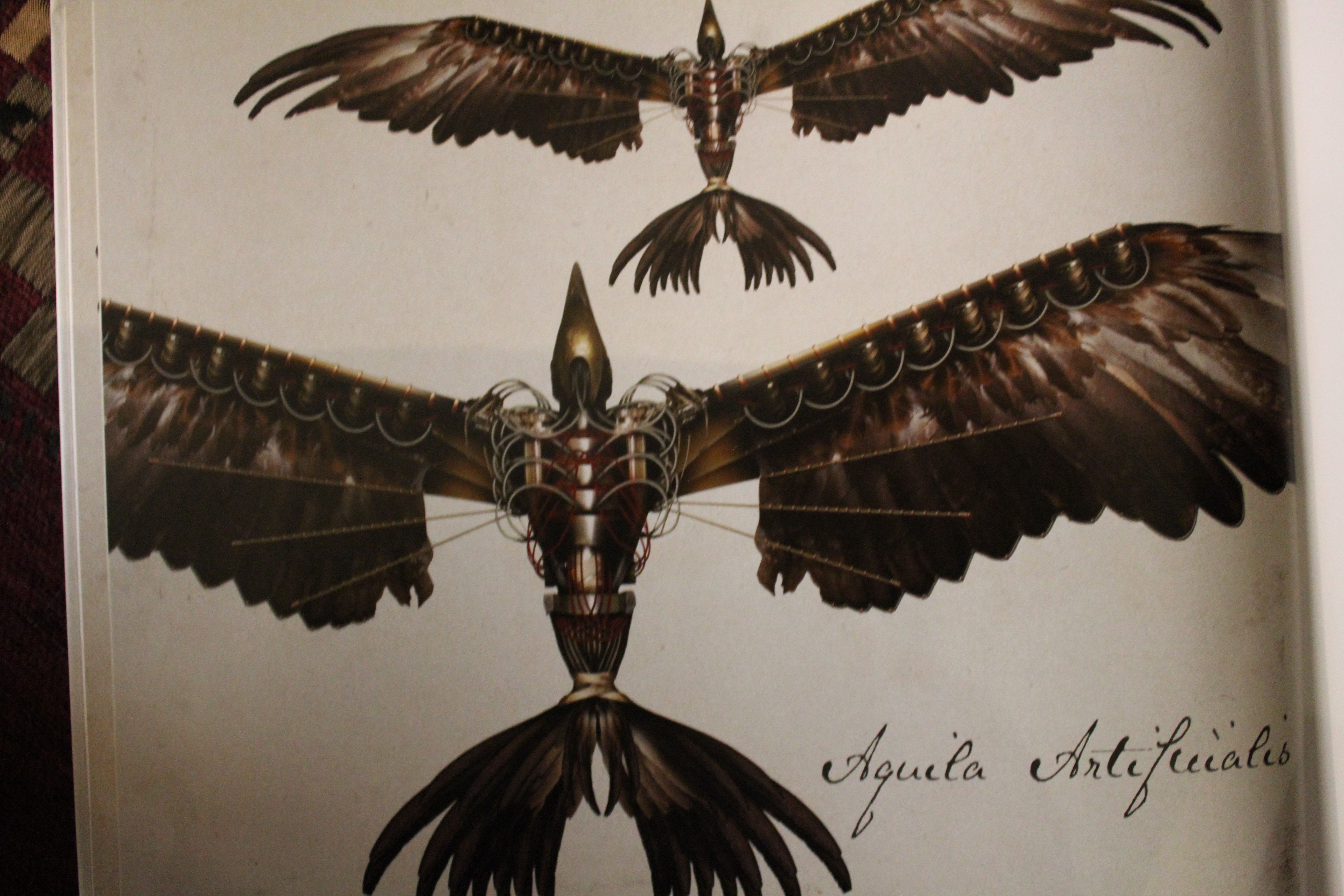
Photo from the book Mechanica by Lance Balchin. Here the photoshopped artificial eagle is displayed. Note the Marnell Turbo Jet engine that propels the bird of prey. The other engineering and scientific details are left to the reader’s and the viewer’s imagination and interpretation. Optical and radar sensors are included. Where could the small pocket computer be that orchestrates the whole system? Can you guess? Photo by W. Van Zyl.
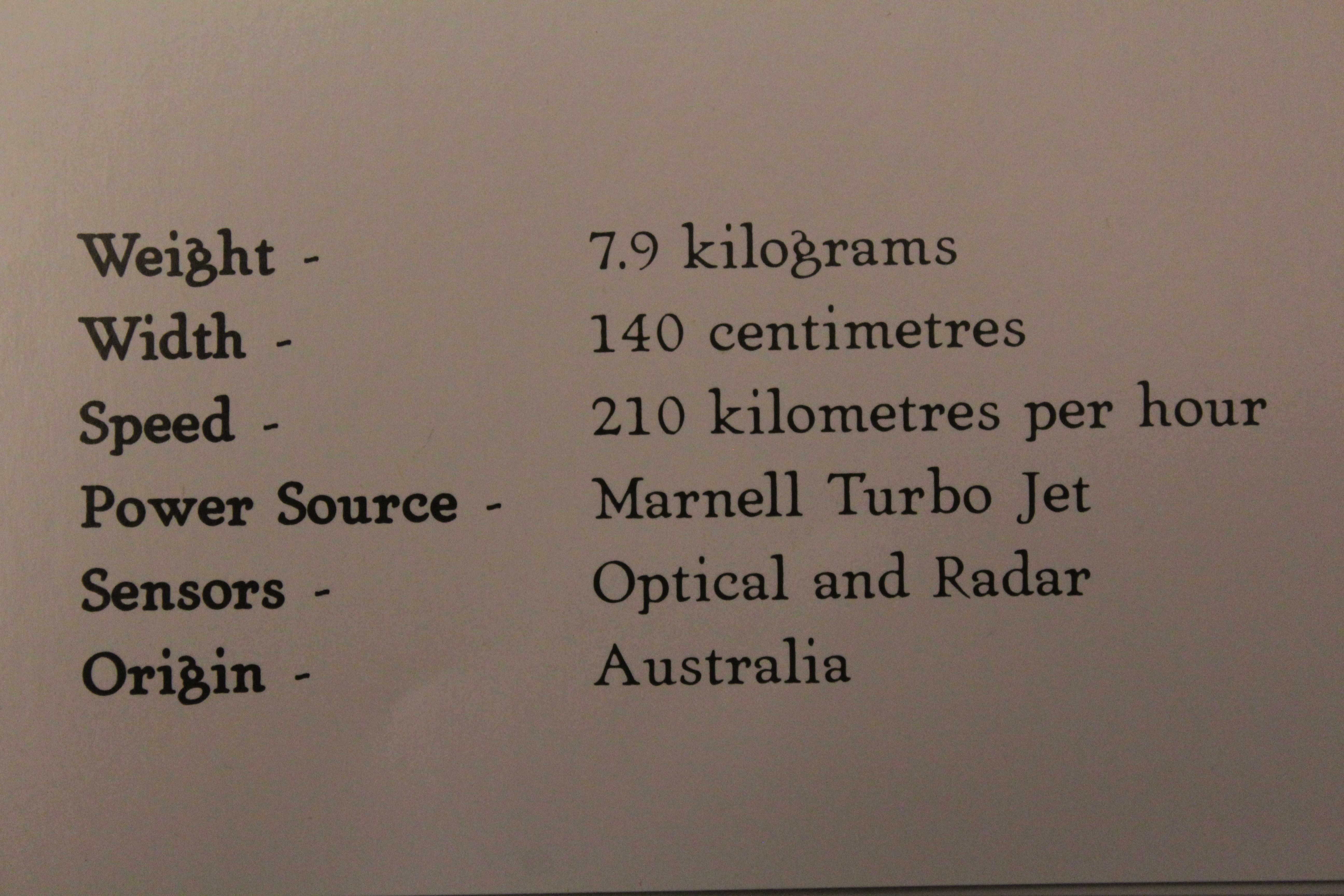
Specifications of the Aquila Artificialis – from Lance Balchin’s book ‘Mechanica.’ Credit: Photo by W Van Zyl.
The illustrations featured in the ‘Mechanica’ and ‘Aquatica’ series of books are created layer by layer in Adobe Photoshop™. The species come to life on the pages from photographs of machinery and other real-world objects. Each image takes many hours to create and consists of thousands of individual layers. Balchin hints at many days of work to produce one species.
How long do humans have to live on earth?
If you are 50 years of age on average, you have 9,125 days left to live. If you are 65, you have 3,650 days left to live. The average person lives 27,375 days.
This random question and answer will make sense later. I will give you a small hint. Calculation: 27,375 ( a person’s total amount of days on the earth) days divided by 6 days (time to design one species on Photoshop – 12 hour work day) = 4,562 days. Yip, you’ve guessed it. One person can create 4,562 species in its lifetime using Photoshop. Note I have not deducted the years as a baby and a child.
Please read on to discover some more brilliant mouse clicks, more lasso-ing, more copying, more pasting, more layering, more connections, more twists and turns.
Contents
Overview:
The Artificial Eagle explained.
How will this thing – the artificial eagle – works?
Considering Creatica.
How many species are there on earth?
Six days. Are you serious?
How many eagle species are there in the world?
Maintenance of the artificial eagle.
Considering Construction, Evolution, and Creation.
“Every Breathing Thing”.
Awe and Majesty.
Resources:
Website of Lance Balchin and his books:
YouTube video links:
About the Researcher (Author):
The Artificial Eagle explained.
The power source for the eagle is a Marnell Turbo Jet Engine – for propulsion – as mentioned. See some photographs of Lance’s drawings and sketches here. At the end of this article, the full titles of his books, a link to his website, and where to find his books will be included. A link to a video by the artist will also feature at the end.
You could be asking what a Turbo Jet engine is. How does it propel the Aquila Artificialis? I am glad you have requested it.
In straightforward terms, the turbo engine works as follows: The turbojet engine sucks in air and compresses or squeezes it. The gases flow through the turbine and make it spin. These gases bounce back and shoot out of the rear of the exhaust, pushing the eagle forward. It is similar to the working of a turbine jet engine. And that is precisely what the artist has done. He has cut a turbo engine from a picture and photoshopped it into the body of the artificial eagle. The feathers are organic, though. There is much more to the design. For example, optical and radar sensors are installed to track, find, navigate, sense, and guide the eagle.
How will this thing – the artificial eagle – work?
While reading and scrutinising the work of Lance Balchin, it became evident that the ‘landing gear’ of the eagle was not considered. Some social criticisms are to follow – sorry, Mr Balchin. How will the eagle land without legs, and how will it take off? How will the artificial eagle rest on the top of a tree if it can’t land? Who will fill up the small fuel tank? Or, will the eagle stay in the air day and night, month after month, year after year? Then it struck me. The mechanica version of the eagle needs many different features to make it functional in the future. Think about the reproduction system, the intestines, the navigation system, the fighting, the attack, the defence systems, the sight, the hearing, the sense of touch, making decisions (brain function), and the nerve system (communication with the brain). There is so much more that has to be considered to make it real and practical. What are the purposes of the artificial eagle? That is the ultimate question.
The mechanica eagle has to stay in the air all its life. It has no legs. How will it make decisions? Who will encode the bird, and how will it be programmed as a bird of prey? The ability and capacity of such a computer will have to be vast. How will every feather be connected to the main computer – considering coordination? Dexterity and agility – like a ‘fighter jet’ – are required. Remember, the eagle has to manoeuvre itself independently, and the computer has to give feed-forward to the feathers and respond to feedback from the feathers as it flies, dives, brakes, lands, and takes off. Not to think about the extravagant aerial manoeuvres required to survive and to attack.
The functionality of the eagle depends on an astonishing amount of information that has to be exchanged between the eagle’s computer and the systems of the eagle. It has to happen at lightning speed. These include survival, navigation, reproduction (?), healing (when injured?), flying, and so much more. By the way, how will the artificial eagle fly and control its control surfaces (rudder, ailerons, and elevator) compared to a jet or plane?
Considering Creatica.
Then God said, “Let us make mankind in our image, in our likeness, so that they may rule over the fish in the sea and the birds in the sky, over the livestock and all the wild animals, and over all the creatures that move along the ground.” Gen 1:26. Think about that statement. Suppose we have dominion over everything on earth today. What will it look like when the artificial eagle and other artificial sea and land creatures – millions of species – roam the earth?
It would take a mammoth task for man to create and maintain such an environment. I am exhausted by the thought.
Stunningly, the words awe and majesty come to mind when I think about the amount of work required to achieve this. And to maintain it. I am feeling tired right now.
How many species are there on earth?
I include an excerpt from an abstract here from a peer-reviewed journal.
‘Knowing the number of species on Earth is one of the most basic yet elusive questions in science. Unfortunately, obtaining an accurate number is constrained by the fact that most species remain to be described and because indirect attempts to answer this question have been highly controversial. Here, we document that the taxonomic classification of species into higher taxonomic groups (from genera to phyla) follows a consistent pattern from which the total number of species in any taxonomic group can be predicted. Assessment of this pattern for all kingdoms of life on Earth predicts ∼8.7 million (±1.3 million SE) species globally, of which ∼2.2 million (±0.18 million SE) are marine. Our results suggest that some 86% of the species on Earth, and 91% in the ocean, still await description. Closing this knowledge gap will require a renewed interest in exploration and taxonomy, and a continuing effort to catalogue existing biodiversity data in publicly available databases.’
Source: PLOS Biology – A Peer Reviewed Journal. https://www.ncbi.nlm.nih.gov/pmc/articles/PMC3160336/
One could attempt to make some calculations to determine how long an illustrator will take to design one species at a time with an average of 70 hours using computer software (waking hours). Then we have to allow for the construction, then testing and modification. Yawn… There will be too many zeros. I will leave the calculations for now.
Six days. Are you serious?
According to the Holy Writ creation took 6 days with rest on day 7. Here is a brief summary.
DAY ONE:- “Let there be light.”
DAY FOUR:- “Let there be LIGHTS…”
DAY TWO:- The waters above (clouds) separated from the waters below (ocean) with an expanse (atmosphere) in between.
DAY FIVE:- The waters below are populated with marine life, while the atmosphere above is populated with flying creatures and birds.
DAY THREE:- The seas are parted, and the dry land appears. God says “let the earth bring forth” plant life-bearing seed.
DAY SIX:- God says “let the earth bring forth” animal life and creeping things … and finally, man.
That was short.
How many eagle species are there in the world?
There are at least 106 eagle species. See a list of all the different species: https://www.birdlife.org/worldwide/news/list-eagle-species
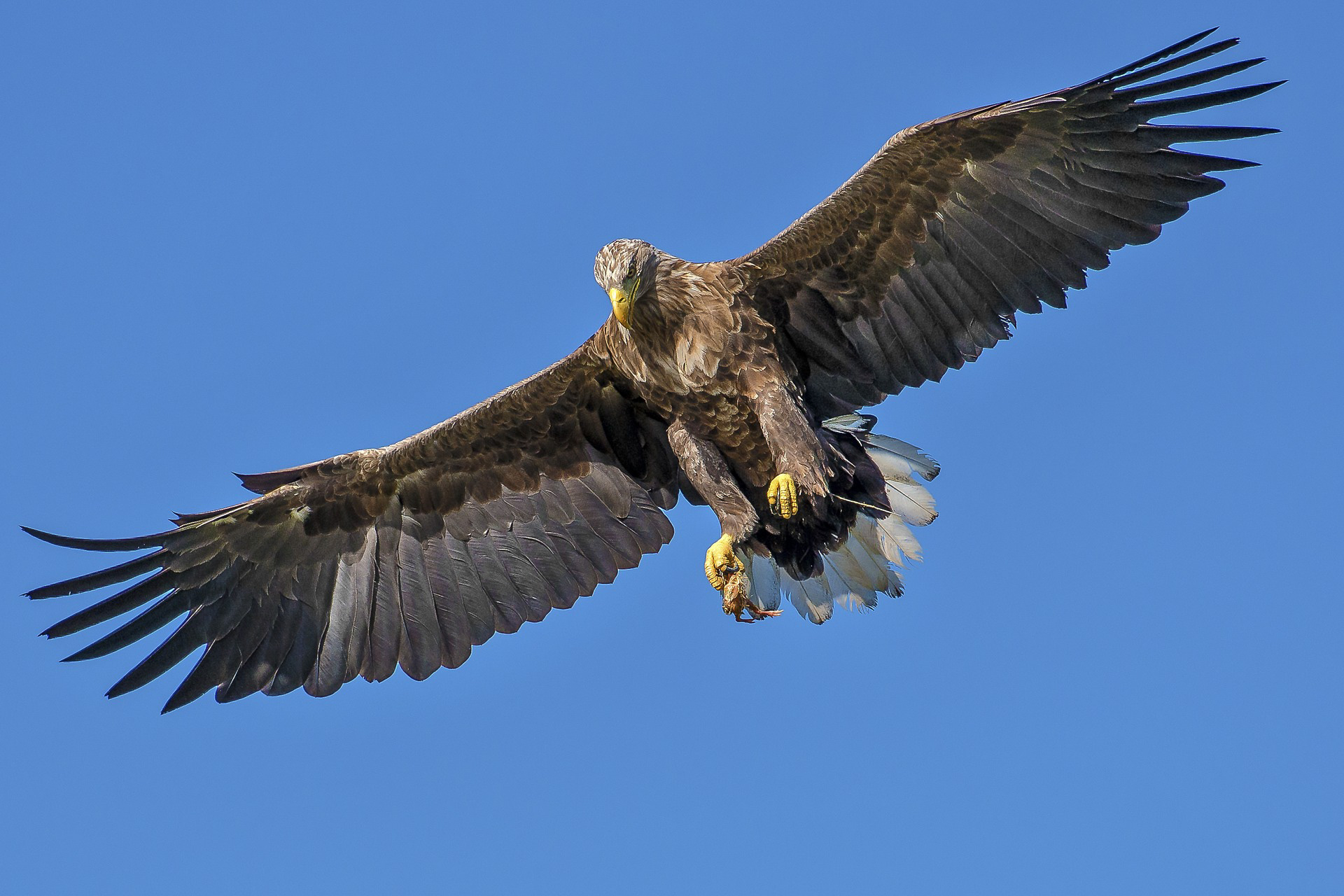
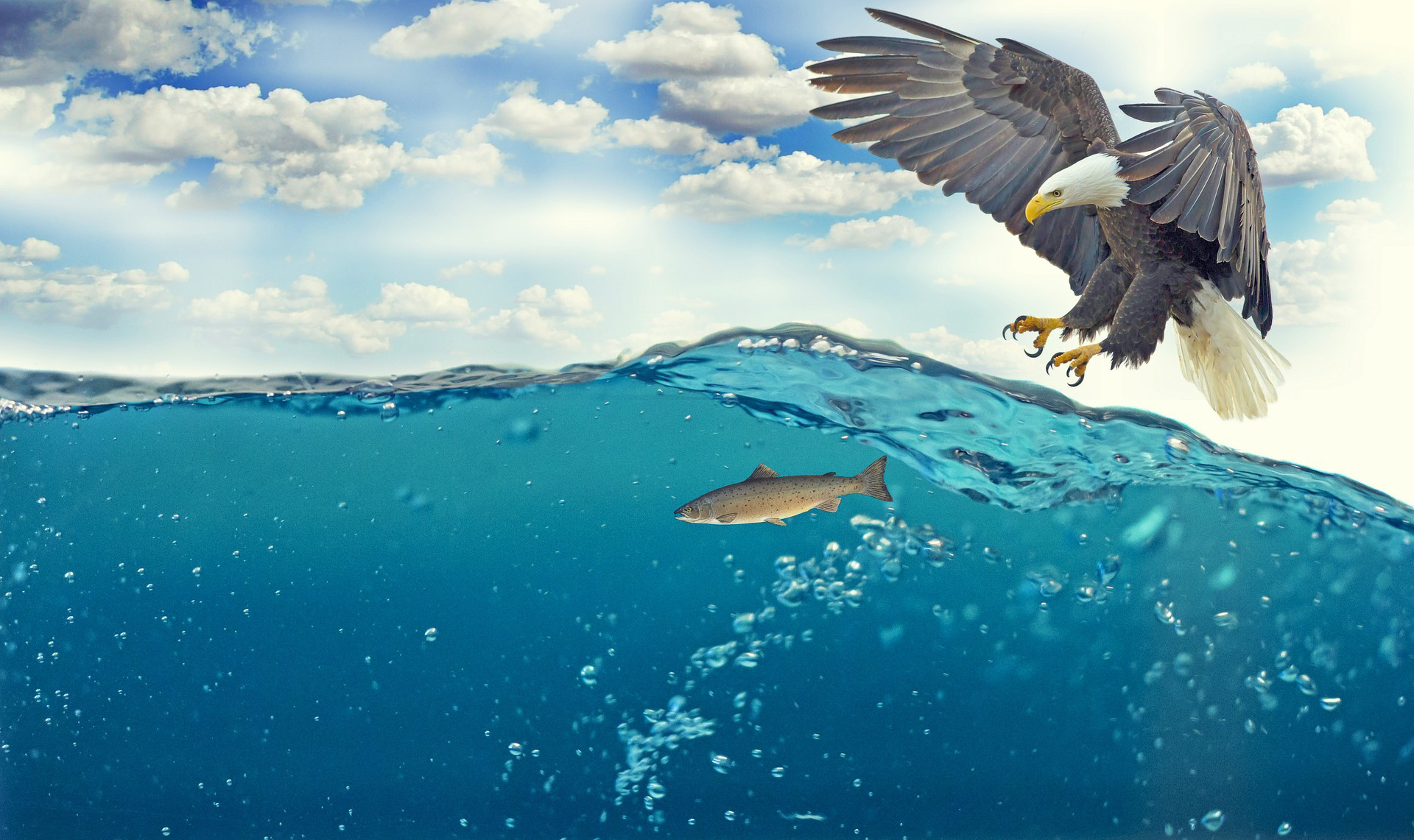
Maintenance of the artificial eagle.
Included are some extravagant questions. How will the artificial eagle be maintained? Who will fix it? Who will find it when it is ‘injured.’ Who will track the position of the eagles? GPS, of course – but who will go and find them and fix them? And the big question, from a philosophical perspective, is what is the artificial eagle’s purpose? What will be entered into the computer of the eagle? In relation to the other mechanical species, what will the purpose and programming be for the artificial species? So much to consider. How to harmonise all the species – living together – will be a mammoth task. How will man fit into the larger picture of these species? Creator, scientist, and mechanic? Ruler? The bigger question is: ‘What will man’s purpose be in this artificial world orchestrating all these species? Think about sitting in the forest – or diving gear on the ocean floor – surrounded by all the artificial species. Will it attack humans? Will it be friendly? Will man enjoy the sounds and the movements it makes? When contrasting mechanica with the natural world, we know that man enjoys the beauty of the natural world. Will man enjoy the artificial world?
Considering Construction, Evolution, and Creation.
From a futuristic perspective, man will have to design, build, maintain, and programme the eagles. What could evolution look like? Think about all the work required to upgrade all the different species of mechanica. Who will do all this work? Yes, you could say roll out a computer update via Bluetooth and Wifi (G5). Great idea!
The natural eagle maintains itself (feeding, grooming, procreating, protecting, attacking, and much more). Nobody has to look after the eagle. It is a fully independent entity. In fact, the organic eagle is designed to function in the food chain to survive and reproduce continuously. Someone has worked it all out; it took less than a second. Are you serious? Less than a second?
Man’s only responsibility is to look after the environment and take care of nature. Ensuring and maintaining the equilibrium to protect the biodiversity on earth is our task. Together all the species are designed to function perfectly in the food chain system. Some live, and some die. The percentages are all worked out in advance. Humans don’t have to worry at all about anything else. As humans, our primary responsibility is to look after the land, the forests, the plants, the animals, the sea life, the freshwater – the environment in general.
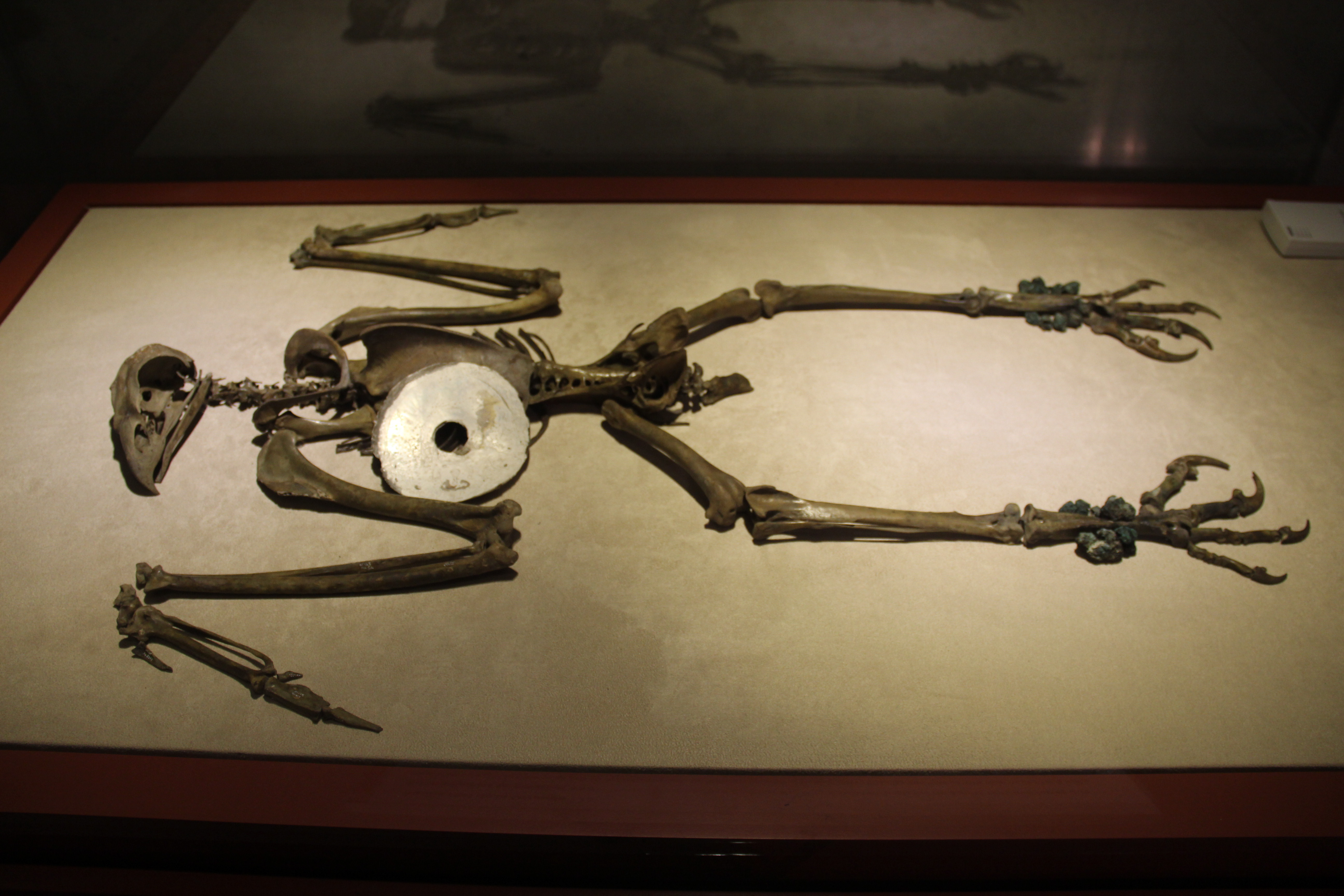
I include an excerpt from the jw.org website about the magnificence of the Creator, Jehovah the Creator of the universe. *Quotes from Psalms and Job.
“Every Breathing Thing”
By discussing various wild animals, what lesson did Jehovah teach Job?
15. Another vivid proof of Jehovah’s creative power lies in the abundance of animal life on the earth. Psalm 148 lists many of the things that praise Jehovah, and verse 10 includes “you wild animals and all you domestic animals.” To show why man should be in awe of the Creator, Jehovah once spoke to Job about such animals as the lion, the zebra, the wild bull, Behemoth (or, hippopotamus), and Leviathan (evidently the crocodile – or dragon?). The point? If man stands in awe of these mighty, fearsome, and untamable creatures, how should he feel about their Creator?—Job, Chapters 38-41.
What impresses you about some of the birds that Jehovah has created?
16. Psalm 148:10 also mentions “winged birds.” Just think of the varieties! Jehovah told Job of the ostrich, which “laughs at the horse and at its rider.” Indeed, this eight-foot-tall (2.5 m) bird may be flightless, but it can run 40 miles per hour (65 km/hr), covering up to 15 feet (4.5 m) in a single stride! (Job 39:13, 18) On the other hand, the albatross spends most of its life in the air over the seas. A natural glider, this bird has a wingspan of some 11 feet (3 m). It may soar for hours at a stretch without flapping its wings. By way of contrast, at only two inches (5 cm) in length, the bee hummingbird is the smallest bird in the world. It may flap its wings up to 80 times in a second! Hummingbirds, glittering like little winged gems, can hover like helicopters and even fly backwards.
Source: https://www.jw.org/en/publications/books/draw-close/power/the-creator/
Awe and Majesty
Here are those two words again. Awe and Majesty. I include the two words in a sentence.
I stand in Awe of the Majesty of Jehovah.
The Mind and the Mouth of GOD.
So, how did He create all of it in just 6 days? I will offer a humble and limited explanation – if you wish.
Jehovah created light. Did you know that the smallest particle of all physical matter is light? So, as He was thinking – considering His design thoughts about the species and the function – He used his imagination (equivalent to billions and billions of pages of textbooks with formulas, charts, and research as we know it) and said: “Eagles (about 106 species), Hawks (about 71 species), Falcons (about 71 species), Crows (about 19 species), …
Then, light particles – molecules and spirals of encoded DNA – assembled and formed these magnificent creatures… Very quickly, they were designed, produced, and note it did not require any testing or tweaking. The newly created species followed His design code – it all worked perfectly. Equilibrium was established within the biodiversity of nature.
Why would light follow his instructions, you may ask? Because the universe has to obey Him. He is the Ruler. The Great ‘I Am.’
The world – as we know it – was framed by His words. We are created in His image.
Through faith we understand that the worlds were framed by the word of God, so that things which are seen were not made of things which do appear. Hebrews 11:3
We are instructed to frame our world and our future by using our words mixed with faith.
“If you say to this mountain…”
Excerpt/extract of the book showing pictures and the intro:
http://www.betterreading.com.au/wp-content/uploads/2016/08/mechanica-extract.pdf
Resources:
Website of Lance Balchin and his books:
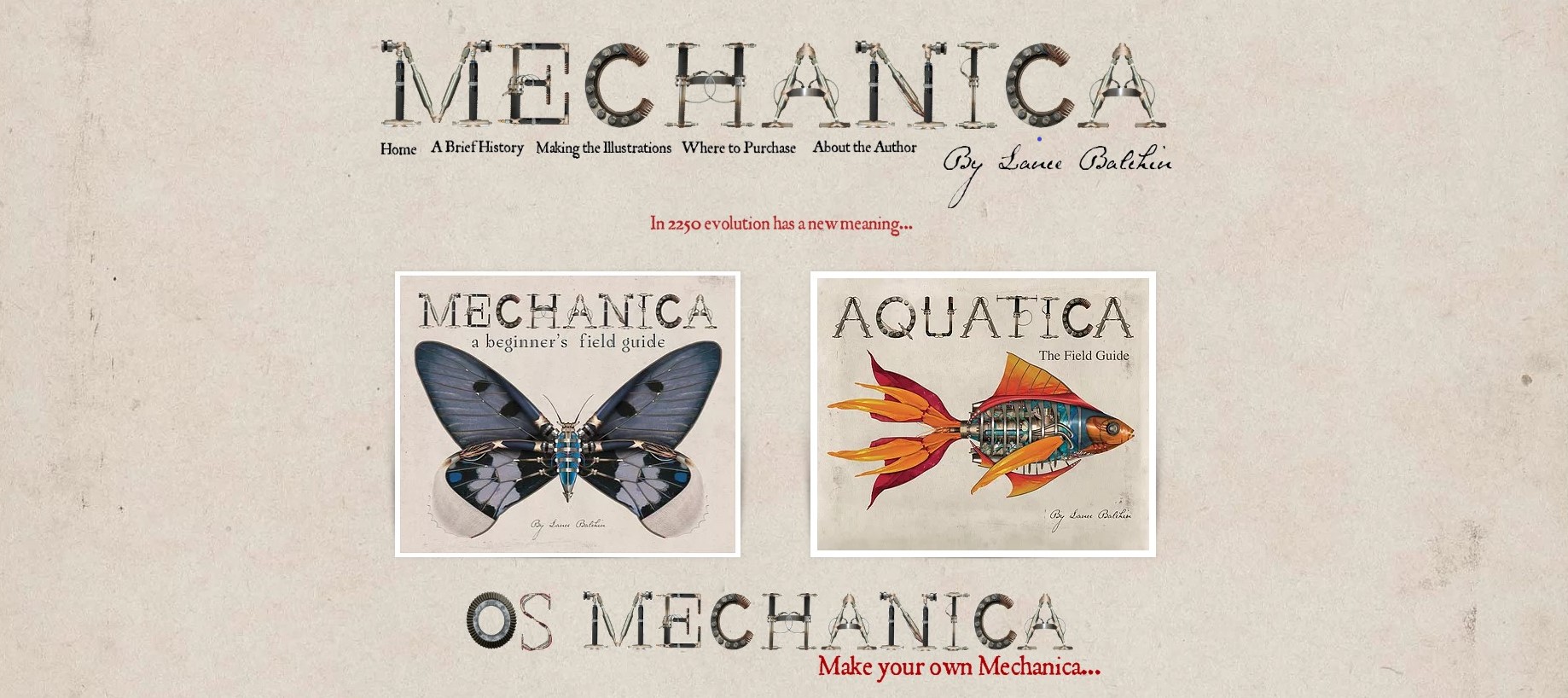
YouTube video links:
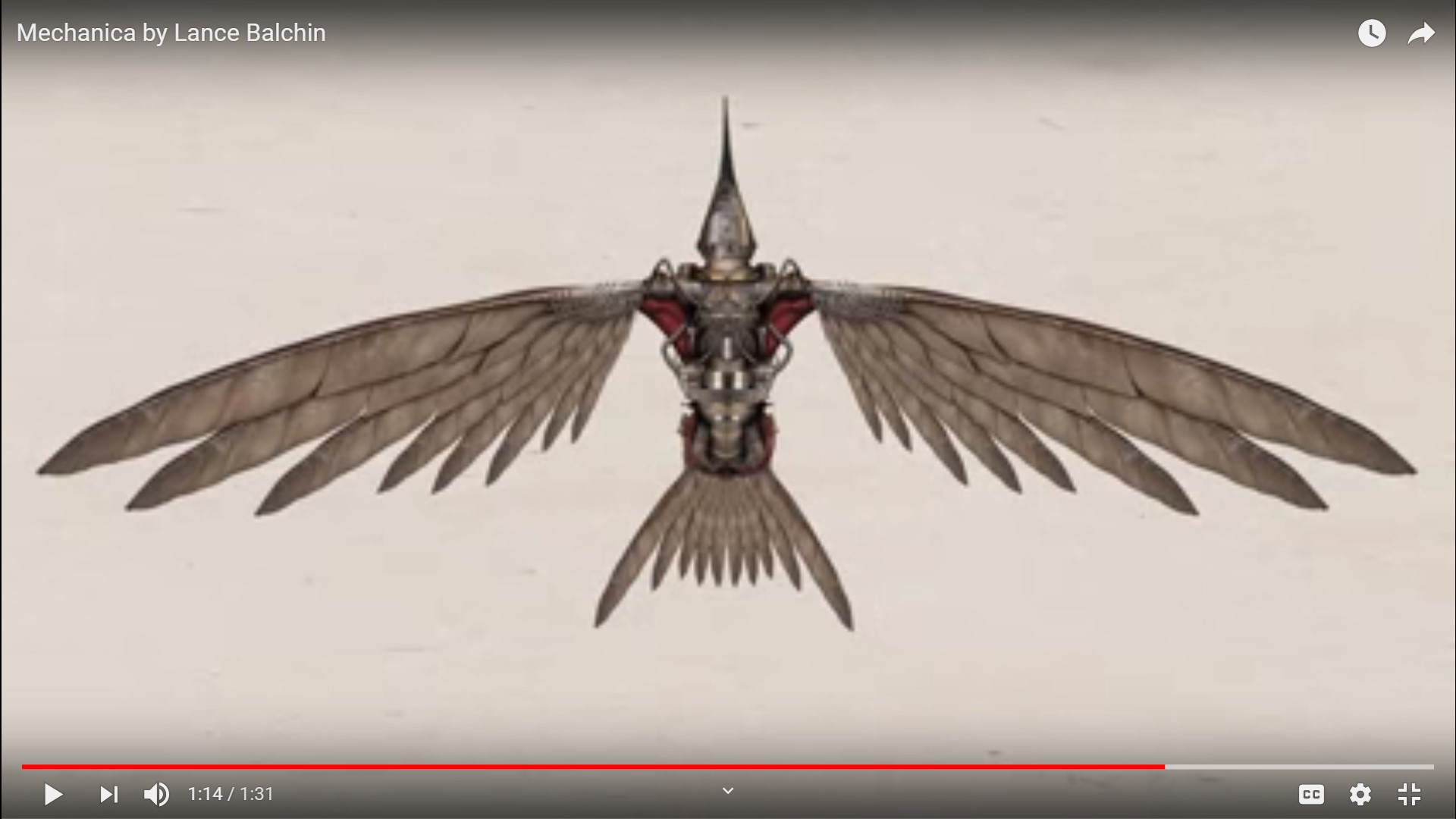
About the Researcher (Author):
William van Zyl is a secondary school Design and Visual Communication teacher. He is a keen researcher and writer. As a postgraduate student and researcher, his academic interests are Open Education (Radical Openness), Alternatives to Neoliberalism, Peer-to-Peer (P2P) Collaboration, P2P Teaching and Learning Technologies, and the Philosophy of P2P Processes and P2P Technologies (Theorists: Foucault, Habermas & Popper). He also has keen interests in the Gifted and Talented, Technology Education, and Virtual Learning Environments (VLE’s) like Moodle & Google Classroom. Sustainable Architecture, the implementation of bio-mimetics, and animal architecture are some of his Design and Visual Communication areas of study.
Christian Perspective
The author is passionate about Christian perspectives and Christian philosophical thinking. He loves to write about many matters and issues related to real-life situations. He loves to explore different perspectives and paradigms; he then compares them to a Kingdom perspective—a lifelong scholar and student.
More about the author: http://williamvanzyl.com/
See more ebooks and publications by the author at:

Copyright
Copyright © 2023 by William Van Zyl
Creatica: A Believers Guide to Perfectica.
All rights reserved. This book or any portion
thereof may not be reproduced or used in any manner
whatsoever without the express written permission of the
publisher except for the use of brief quotations in a book review.
Published by First House Publishing (New Zealand)
First Publishing, 2019
Edited in 2023.

May I request more information on the subject? All of your articles are extremely useful to me. Thank you!
Hi Apsey. Thanks for your comment. I don’t have any extra info on the subject. Regards. William Van Zyl